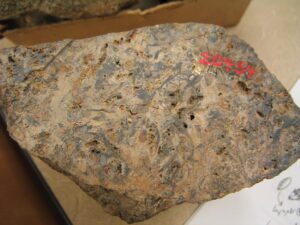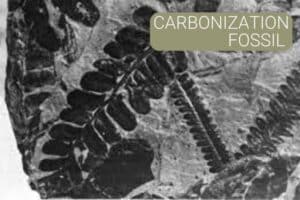Carbonization Fossil: Uncovering the Secrets of Earth’s Ancient Past
Carbonization fossilization is a process that occurs when organic material is preserved in a fossilized form. This process has allowed scientists to uncover secrets about Earth’s ancient past that would have been lost to time without it. In this article, we will explore the process of carbonization fossilization, the importance of carbonization fossils, real-life examples of carbonization fossilization, and the significance of carbonization fossilization in today’s world.
What is Carbonization Fossilization?
Carbonization fossilization is a type of fossilization that occurs when organic material is compressed and heated, causing the volatile compounds in the material to be driven off. This leaves behind a residue that is primarily made up of carbon. Over time, the carbonization process can lead to the creation of a fossil that preserves the shape and structure of the original organism.
The Process of Carbonization Fossilization
Carbonization fossilization occurs when organic material is buried in sediment and protected from decay. As the sediment accumulates, the organic material is compressed and heated by the weight of the overlying layers. This process causes the volatile compounds in the organic material to be driven off, leaving behind a residue that is primarily made up of carbon.
The Different Types of Carbonization Fossils
There are several different types of carbonization fossils, each of which is formed under different conditions. The most common types of carbonization fossils include compression fossils, impression fossils, and coalified fossils. Compression fossils are formed when organic material is compressed by overlying sediment, while impression fossils are formed when the organic material leaves an impression in the surrounding sediment. Coalified fossils are formed when organic material is buried and subjected to high pressures and temperatures, causing it to be transformed into coal.
The Importance of Carbonization Fossils
Carbonization fossils are important because they provide a window into the past that would be otherwise impossible to see. By studying carbonization fossils, scientists can gain insight into ancient environments, discover prehistoric life forms, and trace the evolutionary timeline.
Understanding Ancient Environments
Carbonization fossils can provide valuable information about ancient environments. For example, the presence of certain types of plants and animals in a particular area can indicate the climate and environmental conditions that existed at the time. By studying carbonization fossils, scientists can gain a better understanding of how the Earth’s climate has changed over time.
Discovering Prehistoric Life Forms
Carbonization fossils also allow scientists to discover prehistoric life forms that would be impossible to find otherwise. For example, carbonization fossils have been used to identify new species of plants and animals, such as the recently discovered Tully Monster. By studying these fossils, scientists can gain insight into the diversity of life that existed in the past.
By studying the fossil record, scientists can gain insight into how different species evolved and how they are related to each other. For example, the carbonization fossil record has helped scientists understand the evolution of plants, from the earliest algae to the complex flowering plants that dominate the planet today.
Real-Life Examples of Carbonization Fossilization
There are many real-life examples of carbonization fossilization, each of which has provided valuable insights into the Earth’s ancient past. Some of the most famous examples include the Burgess Shale, the Rhynie Chert, and the Mazon Creek Fossils.

The Carbonization of the Burgess Shale
The Burgess Shale is a deposit of carbonization fossils that is located in the Canadian Rockies. It is particularly famous for its well-preserved soft-bodied organisms, including arthropods and worms, that date back to the Middle Cambrian period. The Burgess Shale has provided scientists with a unique insight into the diversity of life that existed during this time period and has helped to shed light on the early evolution of animals.
The Carbonization of the Rhynie Chert
The Rhynie Chert is a deposit of carbonization fossils that is located in Scotland. It is particularly famous for its well-preserved plants and fungi that date back to the early Devonian period. The Rhynie Chert has provided scientists with a unique insight into the early evolution of land plants and has helped to shed light on how plants adapted to life on land.
The Carbonization of the Mazon Creek Fossils
The Mazon Creek Fossils are a collection of carbonization fossils that are located in Illinois. They are particularly famous for their well-preserved soft-bodied organisms, including arthropods and jellyfish, that date back to the Carboniferous period. The Mazon Creek Fossils have provided scientists with a unique insight into the diversity of life that existed during this time period, and have helped to shed light on the evolution of arthropods.
The Significance of Carbonization Fossilization in Today’s World
Carbonization fossilization is not just important for understanding the Earth’s ancient past – it also has important implications for the present and future. In particular, carbonization fossilization is significant for two reasons: its role in climate change, and its role in energy production.
Climate Change and Carbon Emissions
One of the key factors driving climate change is the release of carbon dioxide and other greenhouse gases into the atmosphere. These gases trap heat, causing the Earth’s temperature to rise and leading to a range of negative impacts, including sea level rise, more frequent extreme weather events, and the loss of biodiversity. By studying carbonization fossils, scientists can gain insight into how the Earth’s climate has changed in the past, and use this information to develop more accurate models of how climate change will affect the planet in the future.
The Role of Carbonization Fossilization in Energy Production
Carbonization fossilization is also important for energy production. Coal, which is formed through the carbonization of organic material, is one of the world’s most important sources of energy. However, the use of coal also has significant environmental impacts, including air and water pollution, habitat destruction, and greenhouse gas emissions. By studying carbonization fossils and developing new technologies for extracting and using coal, scientists and engineers can help to minimize the negative impacts of coal while still meeting the world’s energy needs.
FAQS:
What is an example of a fossil made by carbonization?
Carbonization is a type of fossilization that occurs when organic matter, such as plant or animal remains, is buried under sediment and compressed over time. This compression drives off the volatile components of the organic matter, leaving behind a carbon-rich residue. One example of a fossil made by carbonization is the Burgess Shale, which is a deposit of well-preserved soft-bodied organisms that date back to the Middle Cambrian period.
What is the process of carbonization?
The process of carbonization begins when organic matter, such as plant or animal remains, is buried under sediment. As the sediment accumulates, it exerts pressure on the organic matter, squeezing out water and other volatile components. Over time, this pressure causes the remaining carbon-rich residue to become more and more compressed, eventually forming a fossil.
How are Carbonised fossils formed?
Carbonized fossils are formed through a process known as carbonization. This process occurs when organic matter, such as plant or animal remains, is buried under sediment and compressed over time. As the sediment exerts pressure on the organic matter, volatile components are driven off, leaving behind a carbon-rich residue. This residue can then be preserved as a fossil if conditions are right, such as if the fossil is buried quickly and protected from erosion.
Why are carbonized fossils important?
Carbonized fossils are important for several reasons. First, they can provide valuable information about the Earth’s ancient past, including the diversity of life that existed millions of years ago. Second, they can help scientists better understand the evolution of various species and how they are related to each other. Finally, carbonized fossils are significant for their role in climate change research, as they can provide insights into how the Earth’s climate has changed over time and how it may continue to change in the future. Additionally, carbonized fossils play a role in energy production, as coal – one of the world’s most important sources of energy – is formed through the carbonization of organic material.
What are the differences between carbonization fossils and permineralization fossils?
| Carbonization Fossils
|
Permineralization Fossils
|
|---|---|
| Formed by compression and heating | Formed by the process of permineralization |
| Soft tissue is preserved in the fossil | The fossilization process involves minerals replacing the organic material |
| Organic matter is transformed into carbon-rich residue | Minerals such as silica, calcite, and pyrite fill the pores of the organic material |
| Examples include the Burgess Shale | Examples include petrified wood and dinosaur bones |
| Provides insights into ancient life forms and evolution | Preserves the structure and details of the original organism |
| Important for understanding past climate change | Important for understanding the geological history of the Earth |
This table summarizes the main differences between carbonization fossils and permineralization fossils. Carbonization fossils are formed through compression and heating, while permineralization fossils are formed through the process of minerals replacing organic material. Carbonization fossils preserve soft tissue, while permineralization fossils preserve the structure and details of the original organism. Examples of carbonization fossils include the Burgess Shale, while permineralization fossils include petrified wood and dinosaur bones. Both types of fossils provide important insights into the Earth’s past and are significant for understanding the evolution of life and the geological history of the planet.
Conclusion
Carbonization fossilization is a fascinating process that has allowed scientists to uncover secrets about the Earth’s ancient past. By studying carbonization fossils, scientists can gain insight into ancient environments, discover prehistoric life forms, and trace the evolutionary timeline. Real-life examples of carbonization fossilization, such as the Burgess Shale, the Rhynie Chert, and the

